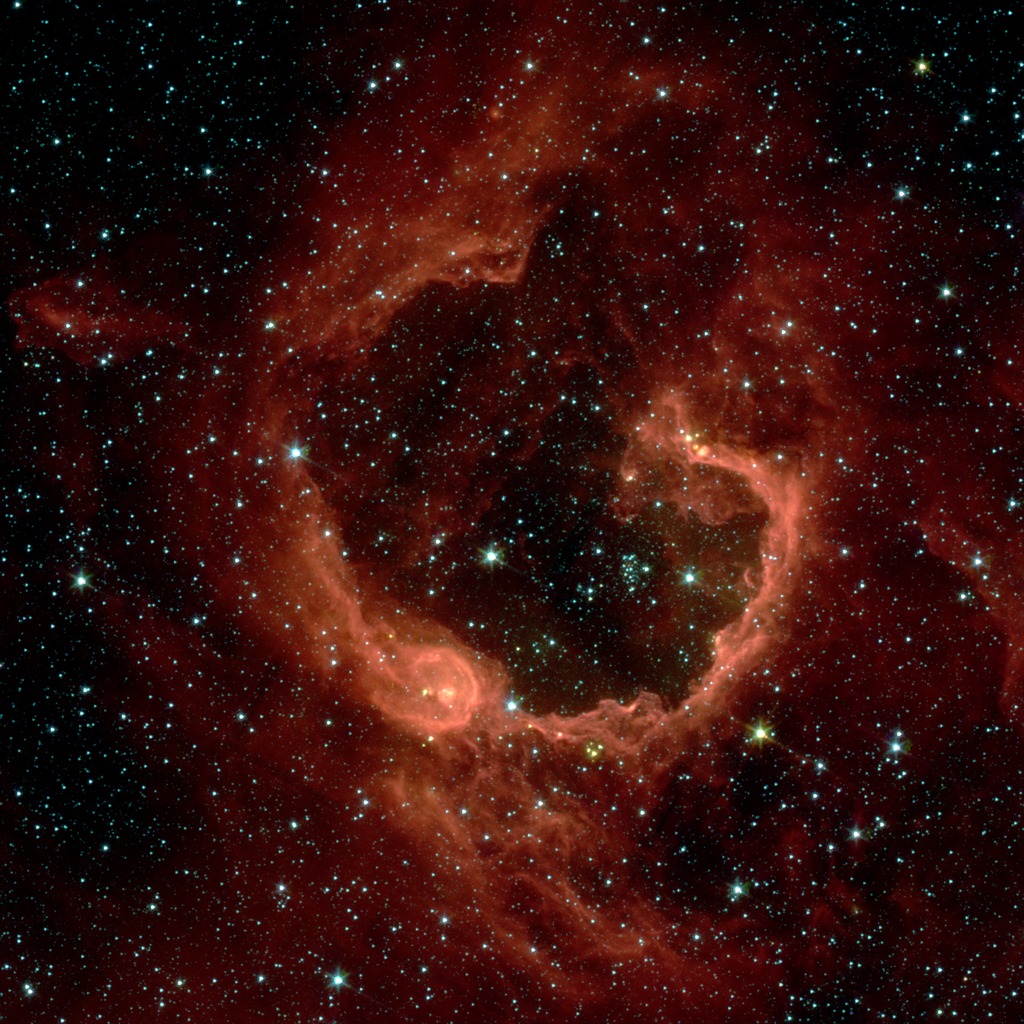
Credit: NASA/JPL-Caltech/E. Churchwell (University of Wisconsin-Madison)
Observation • March 10th, 2004 • sig05-001a
sig05-001a
RCW 79 is seen in the southern Milky Way, 17,200 light-years from Earth in the constellation Centaurus. The bubble is 70-light years in diameter, and probably took about one million years to form from the radiation and winds of hot young stars.
The balloon of gas and dust is an example of stimulated star formation. Such stars are born when the hot bubble expands into the interstellar gas and dust around it. RCW 79 has spawned at least two groups of new stars along the edge of the large bubble. Some are visible inside the small bubble in the lower left corner. Another group of baby stars appears near the opening at the top.
NASA's Spitzer Space Telescope easily detects infrared light from the dust particles in RCW 79. The young stars within RCW79 radiate ultraviolet light that excites molecules of dust within the bubble. This causes the dust grains to emit infrared light that is detected by Spitzer and seen here as the extended red features.
About the Object
- Name
- RCW 79
- Type
- Nebula > Type > Star Formation
- Distance
- 17,200 Light Years
Color Mapping
| Band | Wavelength | Telescope |
| Infrared | 3.6 µm | Spitzer IRAC |
| Infrared | 4.5 µm | Spitzer IRAC |
| Infrared | 5.8 µm | Spitzer IRAC |
| Infrared | 8.0 µm | Spitzer IRAC |
Astrometrics
- Position (J2000)
- RA =13h 40m 47.3s
- Dec = -61° 42' 5.1"
- Field of View
- 24.5 x 24.5 arcminutes
- Orientation
- North is 11.0° left of vertical





